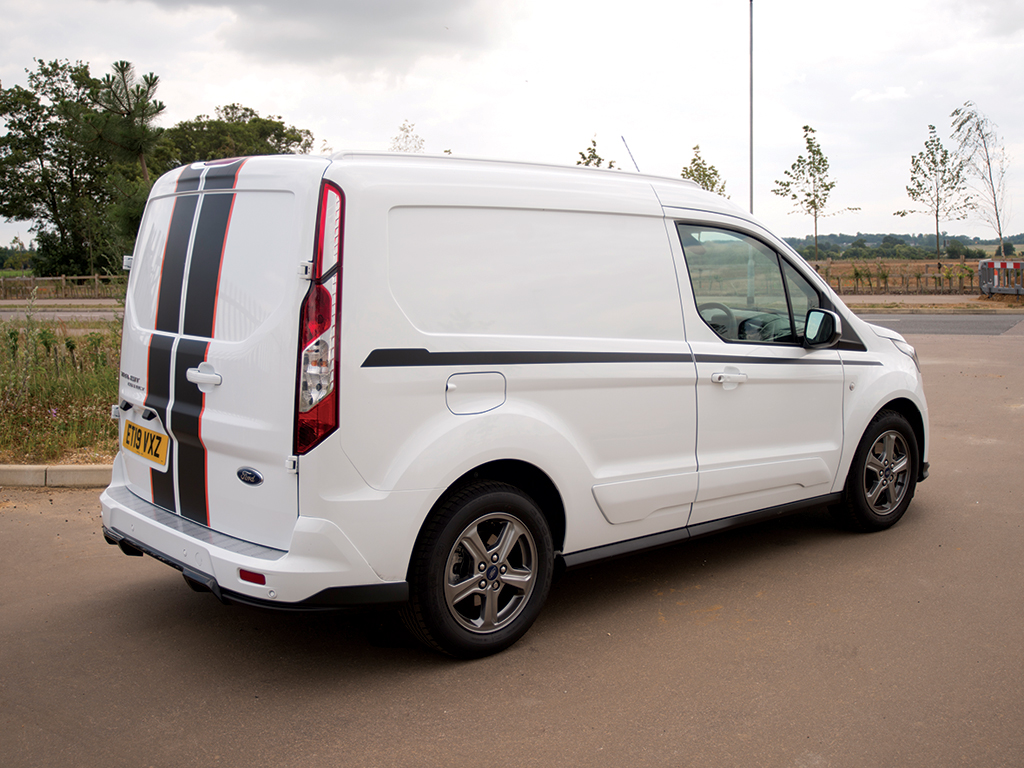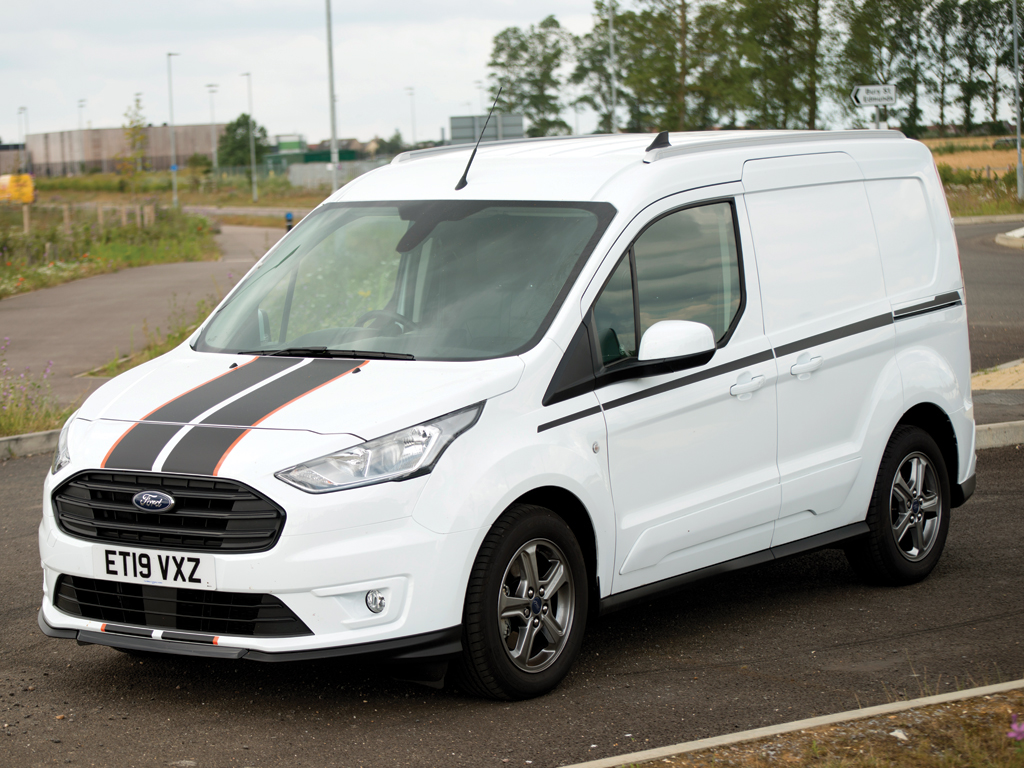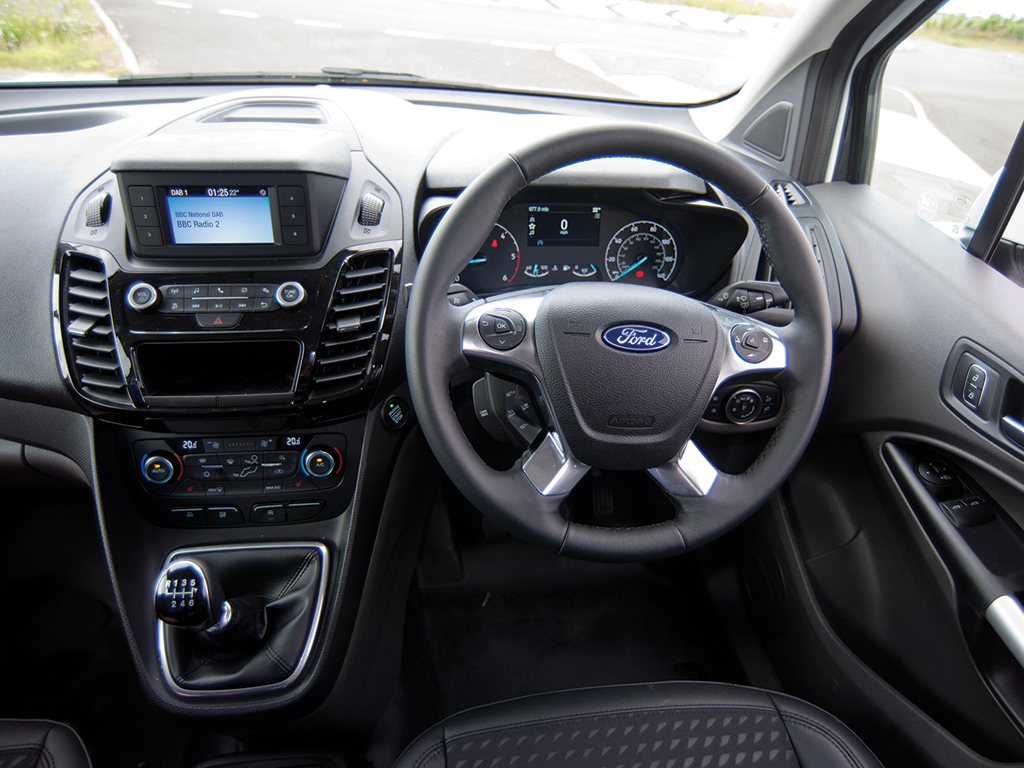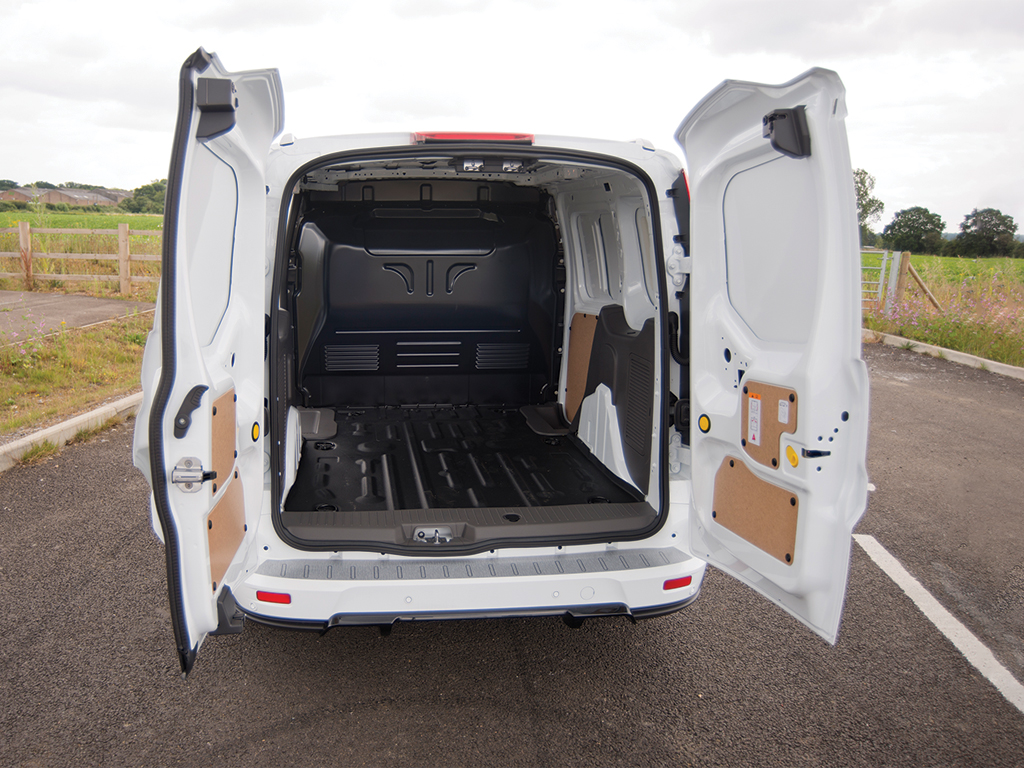Ford’s 1.5-litre diesel engine makes a good companion for sporty Connect, says Dan Gilkes.
The Transit Connect is a well-established stalwart of the compact van market, taking the fight to its many competitors with a targeted mix of carrying capacity, load volume, cab comfort and driving ease. Recent changes include a downsizing of the primary diesel engine, from 1.6 to 1.5 litres, plus the option of an eight-speed automatic transmission.
While the diesel engine has dropped in size, it has increased in output, now offering a choice of 100hp with 240Nm of torque, or the range-topping 120hp with 270Nm of torque. In combination with the slick six-speed manual gearbox, that results in a combined fuel figure of 56.5mpg with 130g/km of CO2.
Should you choose to go with the eight-speed automatic transmission, and we wouldn’t blame you if you did, those figures drop slightly, to 55.4mpg and 135g/km.
Ford has stuck with its proven range of Base, Trend, Limited and Sport trims. While the two lower spec models can be paired with either of the two diesel engines or the 1.0-litre petrol, Limited and Sport only come with this 120hp engine.
Sport also gets you 16-inch alloys, a body styling kit, alloy roof rails, a body coloured rear bumper with chrome moulding strip and of course stripes on the bonnet and rear doors. Inside the cab, there are partial leather heated seats, plus dual-zone climate control.
Oddly, while the Connect Sport does come with a 4.2-inch display for the DAB radio and Bluetooth, Ford’s SYNC3 voice control infotainment, with 6-inch screen, remains on the options list. The same goes for sat nav.
Ford has a host of the latest safety and assistance systems on offer too, including Intelligent Speed Assist with Traffic Sign Recognition, distance indication and Active Parking Assist. However, these too will add to the purchase price.
At the business end, the short wheelbase Connect offers 2.9m3 of load volume, while the L2 model can handle up to 3.6m3. There is also the option of a load-through bulkhead and folding outer passenger seat, that will allow loads up to 3.0m long to be carried in the shorter van, or 3.4m long in the L2.
Payloads range from 645kg on the L1 van, to a maximum of 865kg for the high payload version. For those opting for the longer wheelbase, payloads run from 680-834kg, depending on specification.
On the road, the 1.5-litre diesel engine is certainly a willing performer, though it is perhaps unusually vocal when pushed. Whether tackling urban stop/start traffic or cruising on the motorway, the Connect Sport has it covered, with more than enough performance for a van of this size.
The Verdict
While Sport trim may not be as all-encompassing as you would expect, there are no complaints about the move to 1.5-litre power.
Rating: 4/5





